Objective & Awards
URSI acknowledges scientific research in the field of Radio Science through awarding individuals with a number of URSI Awards. There are "senior" awards such as the Balthasar van der Pol Gold Medal, the John Howard Dellinger Gold Medal, the Appleton Prize, the Booker Gold Medal and the Karl Rawer Gold Medal, and there are "early career" awards like the Koga Gold Medal and the Santimay Basu Prize.
The URSI awardees are selected through a system of nominations and evaluations and the awards are presented at the Opening Ceremony of the URSI General Assembly. Below is a short description of the background and origin of the different URSI Awards. Other pages on this website describe the rules for awarding individuals as well as the list of previous awardees.
Menu
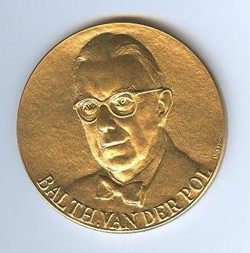 Balthasar Van der Pol, one of the pioneers of radio science, served URSI with devotion and distinction for more than 30 years. It was he who created in 1928 the Commission on Radio Physics, which was particularly concerned with questions of propagation and circuits.
Balthasar Van der Pol, one of the pioneers of radio science, served URSI with devotion and distinction for more than 30 years. It was he who created in 1928 the Commission on Radio Physics, which was particularly concerned with questions of propagation and circuits.
Balthasar Van der Pol was at the same time a scholar, a great technician and a great administrator. Having obtained his doctor’s degree at the University of Utrecht in 1920, he became the theoretical assistant of the famous H.A. Lorentz. In 1922, he entered the Research Laboratories of Philips at Eindhoven, where he remained until 1949; this was his most creative period as a scientist. From 1949 to 1956, he was Director of the International Consultative Committee on Radiocommunications (CCIR) in Geneva.
Balthasar Van der Pol discovered and explained the well-known oscillations of relaxation, and proved the possibility of frequency division. This fundamental contribution has had important consequences in physiology and biology. A second more theoretical and mathematical aspect of his work was the theory of the propagation of electromagnetic waves round the Earth, a problem of great practical importance in the early days of wireless telecommunications. In 1937, with Hendrik Bremmer, he treated it as a diffraction problem of waves produced by a dipole near the surface of a sphere, dielectric and conducting, but he did not introduce the ionosphere into the problem.
In all his work, Balthasar Van der Pol made brilliant use of the method of operational calculus. A third aspect of his scientific activity is his pure mathematical work. He introduced the modern form of the calculus based on the double Laplace integral. This work culminated in 1950 in a treatise with Bremmer as co-author. Balthasar Van der Pol wrote many major papers as, for example, on the classical theory of numbers.
Balthasar Van der Pol was Vice-President of URSI from 1934 to 1950, and Honorary President from 1952 until his death in 1959. Wishing to leave a tangible testimony of her husband’s devotion, Mrs. Van der Pol, with the unanimous agreement and gratefulness of the Board of Officers, gave URSI the possibility to award at each General Assembly the Van der Pol Gold Medal to a scientist whose researches have increased one of the fields of URSI activity. By a most welcome coincidence, the Medal was awarded for the first time during the General Assembly celebrating the Golden Jubilee of the International Scientific Radio Union in 1963. The meeting was held at the Takanawa Prince Hotel in Tokyo on 11 September 1963.
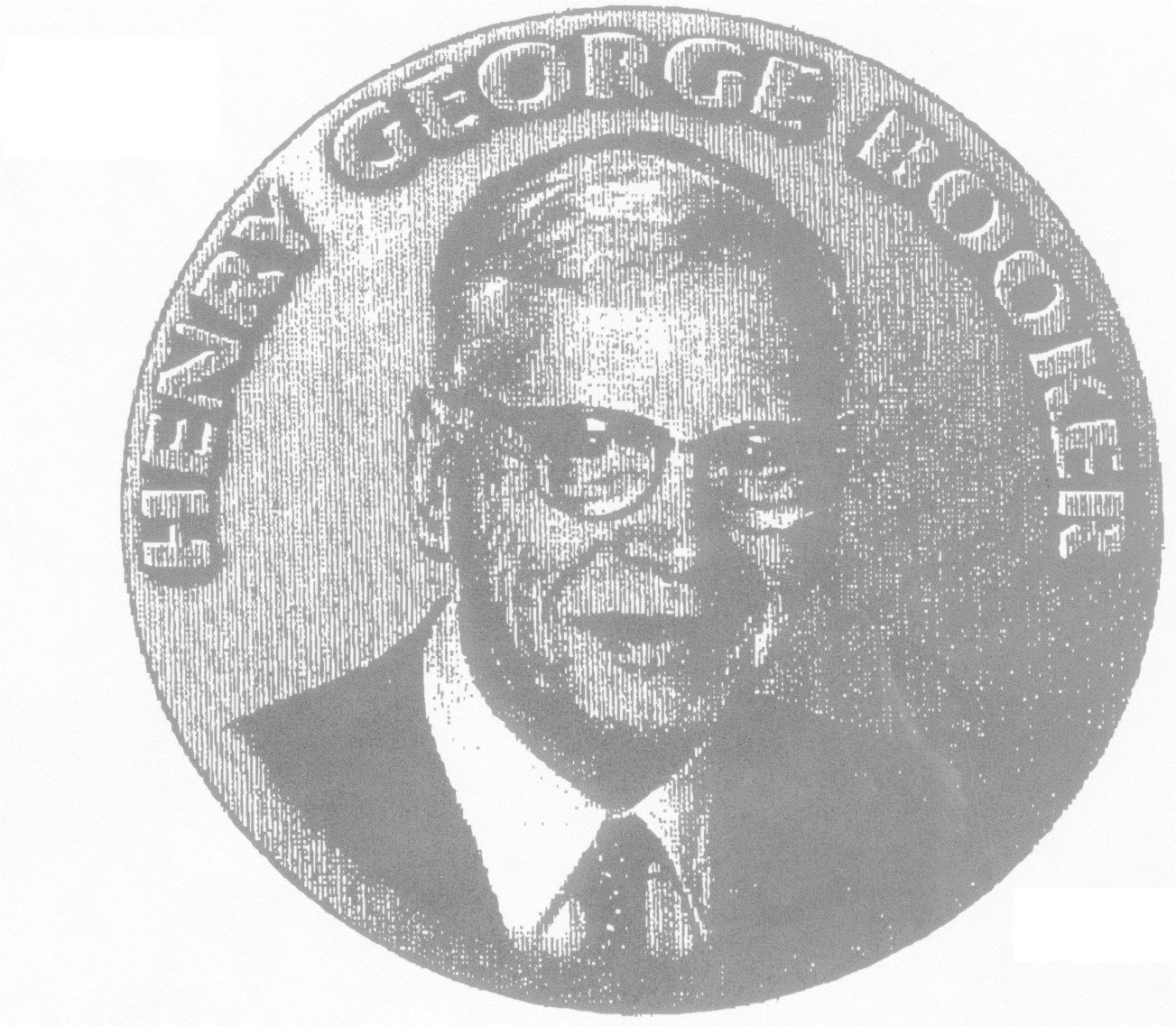 Professor Booker served URSI in many capacities, including Chair of Commission H, 1963-1969, and Vice President, 1969-1975. He was elected Honorary President in 1978, and at the time when the future of URSI was in doubt, he was a strong advocate for the role of telecommunications.
Professor Booker served URSI in many capacities, including Chair of Commission H, 1963-1969, and Vice President, 1969-1975. He was elected Honorary President in 1978, and at the time when the future of URSI was in doubt, he was a strong advocate for the role of telecommunications.
Henry Booker was educated at Cambridge University, where he received the BA degree in pure and applied physics in 1933 and his PhD, specializing in ionopheric physics, in 1936. He received the Smith’s prize and was appointed a Fellow of Christ’s College, Cambridge, in 1935.
During World War II he conducted theoretical research on antennas and radio wave propagation, and on the conclusion of hostilities, returned to Christ’s College as a lecturer. He became Professor of Electrical Engineering and Engineering Physics at Cornell University in 1948, and served as the Director of the School of Electrical Engineering and Associate Director of the Center for Radiophysics and Space Research. He helped to build up the research program in radio science at Cornell, and attracted many talented graduate students, post-docs and faculty. He was also instrumental in the creation of the Arecibo facility. In 1965 he moved to the University of California in San Diego, where he founded and was the first Chair of the Department of Applied Electrophysics. He was appointed Emeritus Professor of Applied Physics in 1978.
Dr. Booker was active in the IEEE Antennas and Propagation Society, and served a term as President. Among his many honours, he was elected a Fellow of the IRE (now IEEE) in 1953 “for his theoretical work in electromagnetism and radio wave propagation”. He received the IEEE Centennial Medal in 1984. He was elected a Member of the US National Academy of Sciences (NAS) in 1960, and served as Chair of the NAS Sanguine and Climatic Impact Committees.
As a result of conversations initiated at the 1978 General Assembly, some friends of Professor Booker established a fund to honour him on his retirement from the University of California - San Diego, and decided to use the income from the fund to support the attendance of a young US scientist at each General Assembly.
The Booker Fellowship was first awarded in 1981, and has been awarded every three years since then. Over the years the fund has increased in value, and with the help of some additional contributions, is now able to support also the Booker Gold Medal, first awarded in 2002, for outstanding work in telecommunications or a related science.
The Appleton Prize is awarded for outstanding contributions to studies in ionospheric physics. The award is for career achievements of the candidate with evidence of significant contributions within the most recent six-year period. The Appleton Prize was supported by the Royal Society from its inception in 1969 until 2008 and is now supported by the UK URSI Panel.
Edward Appleton was President of URSI from 1934 to 1952, and Honorary President from 1952 until his death in 1965. He graduated in Physics in 1914 from St. John’s College, Cambridge and, in 1919, became an assistant demonstrator in experimental physics under Lord Rutherford. He conducted research on thermionic valves, atmospherics and the fading of wireless signals which were just coming into use for broadcasting.
In 1925 Appleton and Barnett in the United Kingdom, and Breit and Tuve in the United States showed for the first time that radio waves could be reflected from the ionized portion of the atmosphere. This was the beginning of an intensive worldwide study of the ionosphere. Which continues to this day. As Chair of the Commission on Atmospheric Disturbances (1928-1946), the Commission on Radio Wave Propagation (1946-1948) and the Commission on Ionospheric Radio (1948-1954), Edward Appleton led the promotion and development of URSI’s international work in these fields.
Edward Appleton was very active in encouraging the long-term study of ionospheric conditions and their dependence on the eleven-year solar cycle. In his role as Chair of the URSI Committee for the International Geophysical Year 1957-1958, he was instrumental in sponsoring international scientific collaboration. This period proved to be of great significance in the history of ionospheric radio wave propagation, since the prevailing solar activity was the highest recorded during the previous 200 years of systematic observations.
For his public services, Edward Appleton was honoured with a knighthood in 1941 and appointed a Knight Grand Commander of the Order of the British Empire in 1946. World recognition of his scientific work was given to him by the award in 1947 of the Nobel Prize for Physics. In 1949 he was appointed Principal and Vice-Chancellor of Edinburgh University, a post he held until his death.
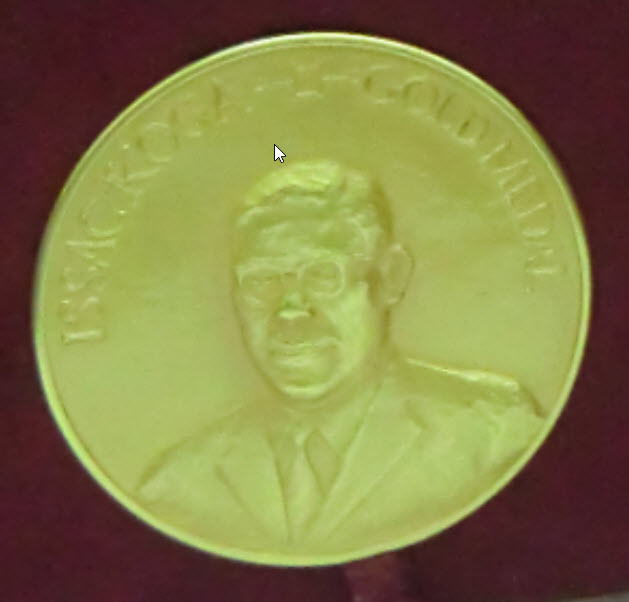 Professor Koga, born in Japan in 1899, was a pioneer in the field covered by one of the first URSI Commissions, the Commission on Radio Measurements and Standards. He studied at Tokyo Imperial University, where he received the degree of Doctor of (electrical) Engineering in 1930. Having worked and lectured at the Electrotechnical Research Institute of Tokyo and at the Electrical Engineering Department of the Tokyo Institute of Technology, he became Professor, and later on Dean, of the Faculty of Engineering of Tokyo University. He retired in 1960 with the title of Professor Emeritus, but did not cease his scientific activity.
Professor Koga, born in Japan in 1899, was a pioneer in the field covered by one of the first URSI Commissions, the Commission on Radio Measurements and Standards. He studied at Tokyo Imperial University, where he received the degree of Doctor of (electrical) Engineering in 1930. Having worked and lectured at the Electrotechnical Research Institute of Tokyo and at the Electrical Engineering Department of the Tokyo Institute of Technology, he became Professor, and later on Dean, of the Faculty of Engineering of Tokyo University. He retired in 1960 with the title of Professor Emeritus, but did not cease his scientific activity.
Issac Koga’s research covered a wide range of topics relating to frequency standards, piezoelectric crystals and crystal oscillators, including frequency division by means of electronic circuits. By 1933, his name was already well known in scientific circles, particularly for his invention of a piezoelectric crystal unit with zero frequency-temperature coefficient. This is widely known as the Koga-cut crystal, and has been used in a variety of applications related to international radio communications and broadcasting. His successful work in that field provided a sound basis for the subsequent rapid progress in research on piezoelectric crystal units. He also formulated the well-known theory on the operating mechanisms of vacuum tube circuits for the generation of radio frequencies.
Professor Koga was the author of more than 200 papers, and he received many prizes, including the Order of Cultural Merit (the highest Japanese academic decoration). In 1977 he was elected a Member of the Japanese Academy of Sciences. He also made outstanding contributions to the field of education in Japan, and played a leading role in establishing the Japanese Society for Engineering Education. On the other hand, his interest in linguistics led him to the Vice-Presidency of the Council on the national language of Japan in the Ministry of Education, Science and Culture.
Issac Koga was elected Vice-President of URSI in 1957, and President for the period 1963-1966. The title Honorary President was conferred on him in 1981. He was a strict educator of young students and researchers, but at the same time a warm-hearted research leader. When he passed away in 1982, the Japanese Committee of URSI proposed the establishment of this Gold Medal for young scientists in commemoration of Professor Koga as a great educator as well as a distinguished researcher.
The Koga Medal is sponsored by the Japanese URSI Committee, and funded by the Koga Family and the Japanese Committee of URSI. Unlike the other URSI Prizes, the Koga Medal is awarded specially to a young scientist under the age of 35, who has made outstanding contributions to any of the branches of science covered by the ten Commissions of the URSI. It was first awarded in 1984.
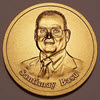 Dr. Santimay Basu, born in India in 1933, was the internationally recognized expert in the area of ionospheric scintillation, having made cutting edge research contributions to every aspect of the field encompassing diverse natural irregularity formation processes at high-, mid- and low latitudes, as well as artificial turbulence generation through high-power high frequency (HF) radio wave interactions and high-altitude chemical releases.
Dr. Santimay Basu, born in India in 1933, was the internationally recognized expert in the area of ionospheric scintillation, having made cutting edge research contributions to every aspect of the field encompassing diverse natural irregularity formation processes at high-, mid- and low latitudes, as well as artificial turbulence generation through high-power high frequency (HF) radio wave interactions and high-altitude chemical releases.
He completed his Ph.D in Radio Physics at the University of Calcutta in the field of solar radio astronomy, but shortly after moving to the United States as a National Academy of Sciences Research Associate in 1971 he transitioned to ionospheric physics with a focus on plasma irregularity formation and radio wave propagation.
Beginning in the mid-seventies Santi pioneered the use of global multi-technique campaigns combining satellite radio wave scintillation, VHF radar, in-situ (rocket and satellite) and optical measurements to characterize complex plasma structures.
Dr. Basu also documented the impacts of scintillation on the performance of space-based communication and navigation systems and through his influence scintillation has become recognized as the number one priority for the entire space weather field supported by DoD, NASA and NSF.
His scientific results led the way to the subsequent development of a global scintillation monitoring network, the Scintillation Network Decision Aid (SCINDA), and the concept for a satellite system dedicated to scintillation forecasting, the Communication/Navigation Outage Forecasting System (C/NOFS).
Before his passing away in 2013, Dr. Santimay Basu was contributing his expertise as a research physicist at Boston College after completing an illustrious career in the Ionospheric Physics Division of the Air Force Research Laboratory.
Santi’s reputation for scientific excellence and generosity was matched only by his exemplary temperament, gracious and modest attitude and constant consideration for his fellow man.
Dr. Santimay Basu and his dearly beloved spouse, Dr. Sunanda Basu, have been closely involved in URSI over many decades. Dr. Sunanda Basu has therefore generously proposed to establish an Early Career Award in remembrance of her late husband.
At the General Assembly and Scientific Symposium in Beijing the “Santimay Basu“ prize was presented for the first time to a young scientist, who has made an outstanding contribution to research that furthers the understanding of radio-wave propagation in random media and its application for the benefit of society.
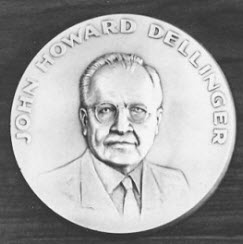 As stated by the President of the US URSI Committee on the occasion of the presentation of the first J.H. Dellinger Gold Medal in 1966: “the viability and effectiveness of URSI are due to the efforts of men like Dr. Dellinger, a physicist who devoted his career to science in the public service”.
As stated by the President of the US URSI Committee on the occasion of the presentation of the first J.H. Dellinger Gold Medal in 1966: “the viability and effectiveness of URSI are due to the efforts of men like Dr. Dellinger, a physicist who devoted his career to science in the public service”.
John Howard Dellinger earned his degrees in physics from George Washington University and from Princeton University. He served as a physicist at the US National Bureau of Standards from 1907 to 1948. He was Chief of the Radio Section from 1919 to 1946, and Chief of the Central Radio Propagation Laboratory from 1946 to 1948. He conducted extensive research on physical, mathematical, radio, electronic, aviation and telecommunication subjects, and authored 136 articles, books and treatises.
Like many of the scientists associated with URSI, Dr. Dellinger combined his interests in radio science with radio engineering aspects. Either as a researcher or as a supervisor, he was involved in numerous aspects of the development of the radiosonde and of basic radio aids to air navigation (a directive radio beacon to guide airplanes, airways radio range beacon systems, blind landing systems). His scientific acuity led to the discovery of the simultaneous occurrence of visible solar eruptions and semi-worldwide sudden radio fadings (“the Dellinger Effect”). He supervised the initiation and development of the standard frequency broadcast service known in the United States as WWV.
He was a Vice-President of URSI from 1934 to 1952, and a Honorary President from 1952 until his death ten years later. He had been Chair of the Commission on Radio Wave Propagation, and of the Commission on Radio Measurements and Standards. From 1954 he served as Chair of the URSI Committee for CCIR, which was constituted according to a proposal by him. His interest in radio history, and his energy to delve into it, continued until the end of his life.
The John Howard Dellinger Gold Medal was established in 1965 by the US URSI Committee, and was presented for the first time in 1966.
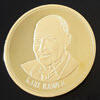 The Rawer Gold Medal honours the work and life of Professor Karl Rawer, the father of the International Reference Ionosphere (IRI), who chaired the COSPAR/URSI Inter-Union IRI Working Group from its inception in 1968 to 1976, and remained an active mentor for two decades thereafter. In his quest to fully understand and describe the physical processes that form the ionosphere and control its behavior he always insisted on experimental verification of any theoretical model, using the Humboldtian approach of "comprehensive and extensive fieldwork, careful preparation for expeditions, and meticulous collection of data". Prof. Rawer served as vice-chair (1966 - 1969) and chair (1969 - 1972) of URSI Commission G (Commission III at that time).
The Rawer Gold Medal honours the work and life of Professor Karl Rawer, the father of the International Reference Ionosphere (IRI), who chaired the COSPAR/URSI Inter-Union IRI Working Group from its inception in 1968 to 1976, and remained an active mentor for two decades thereafter. In his quest to fully understand and describe the physical processes that form the ionosphere and control its behavior he always insisted on experimental verification of any theoretical model, using the Humboldtian approach of "comprehensive and extensive fieldwork, careful preparation for expeditions, and meticulous collection of data". Prof. Rawer served as vice-chair (1966 - 1969) and chair (1969 - 1972) of URSI Commission G (Commission III at that time).
Karl Rawer, born 1913 in Neunkirchen, Germany, has dedicated his professional life to the exploration of Earth's ionosphere and the inner magnetosphere. After studies in mathematics and physics with Gustav Doetsch in Freiburg and Arnold Sommerfeld in Munich, he wrote his doctoral dissertation with Jonathan Zenneck developing the theory of high-frequency radio wave propagation and reflection in a realistic multi-layered ionosphere, published in Annalen der Physik (1939). Rawer developed new methods of ionospheric radio wave propagation predictions for the German forces during World War II, and after the end of the war for the French Service de Prevision Ionospherique de la Marine. In 1953, he published the book "Die Ionosphäre" (English translation in 1957), which for the first time rigorously discussed HF radiowave propagation in the context of ionospheric morphology. His book "Radio Wave Propagation in the Ionosphere" (Springer, 1993) summarizes the contemporary knowledge of this topic. Together with his friend Roy Piggott he wrote the "URSI Handbook of Ionogram Interpretation and Reduction" (1961), which today is still the basis for all ionogram interpretation.
As the director of the Ionospheric Institute in Breisach, and later of the Fraunhofer Institute for Space Research in Freiburg, Prof. Rawer systematically fostered international cooperation especially with France, the United States, Belgium, Italy, Greece, the United Kingdom, he sought early contacts to the then separated German Democratic Republic and to the Soviet Union, but also with Asia via joint rocket launches in India, and with Africa by means of student exchanges. His motto for the cooperation always was: scientific rigor and honesty, and respect and compassion for your colleagues.
In 1968-69 when COSPAR and URSI formed the Inter-Union IRI Task Force, they appointed Karl Rawer its first chairperson. The empirical IRI model is periodically revised when new observational data are ingested, and has become the world’s most trusted ionospheric model and the ISO standard. Researchers around the world are continuing his work, and expand it along new venues.
The President’s Award was introduced in 2017 and honours outstanding contributions to the work and mission of URSI. It is awarded on the occasion of the General Assembly and Scientific Symposium. Candidates for this Award are nominated by the URSI President or a current member of the URSI Board with approval or rejection by the Board.
No current member of the URSI Board of Officers is eligible and ordinarily only one award is made per triennium. It will not be unusual if no award is made.

